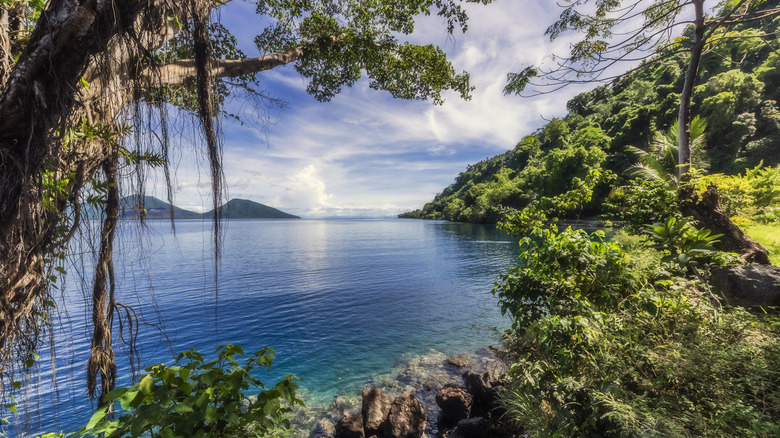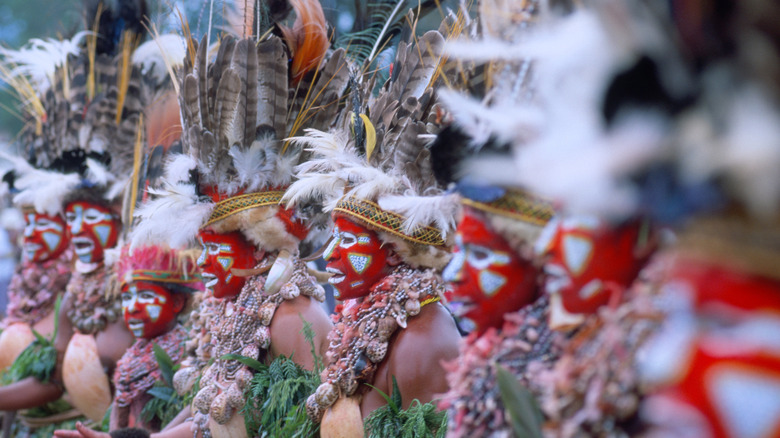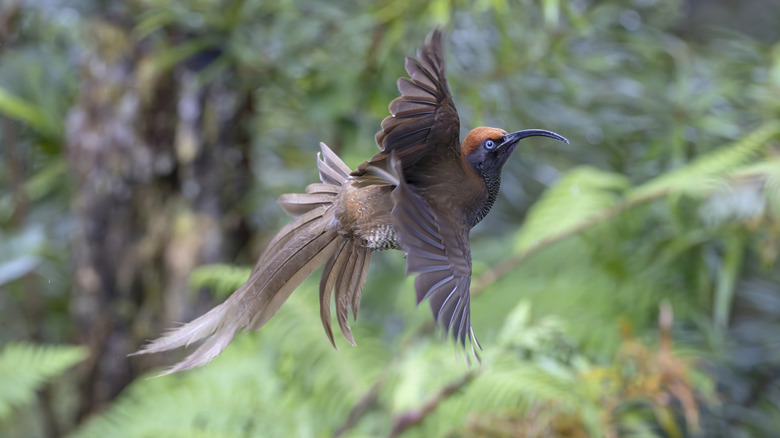Culture And Coral Reefs Abound On This Tropical Island With More Native Languages Than All Of Europe
While tropical vacations generally have an exotic feel to them, a trip to Papua New Guinea (PNG) truly takes travelers off the beaten path. Located on the eastern half of the island of New Guinea, the world's second-largest island, PNG is a country of stunning diversity that few other places can match. To its west lies Raja Ampat, an Indonesian archipelago known for its surreal natural beauty. The region's topography, a heady mix of rainforests, grasslands, volcanic mountains, and pristine beaches, has resulted in a profusion of wildlife and cultural diversity.
PNG is home to a mind-boggling number of languages — over 800. This makes PNG the most linguistically diverse country in the world, followed by Indonesia, Nigeria, and India (per the World Economic Forum). In comparison, Europe has 24 official languages. Even if you take into account all the current spoken languages on the European continent, estimates for the region range from about 100 to 200. The PNG's cultural richness translates to a one-of-a-kind travel experience that should make it one of the top entries on your travel bucket list.
It's also worth noting that while a visit to PNG seems like something only adventure junkies might be into, there's a lot for slow travelers to enjoy as well, especially considering the variety of experiences on offer. Sure, there are multiple spots around the island where you can dive all year and be surrounded by stunning coral reefs, marine life, and historical World War II wrecks. There are also nature hikes where you'll see rare tree kangaroos and the world's largest butterfly. But it's equally possible to enjoy a languid cruise through PNG's many ports, exploring its many tribal cultures. Jacksons International Airport is the country's largest hub and has flights coming in from Japan, Malaysia, Singapore, Australia, and other surrounding countries, making PNG quite easy to get to.
The culture and languages of Papua New Guinea are some of the world's most diverse
Plan to visit PNG during the dry season, which lasts from June to September. In addition to the climate being cool, the lack of precipitation also makes navigating rainforests and diving a lot easier and rewarding. The island receives rainfall from December to March. Papua New Guinea can be explored in multiple ways, including catching flights to different parts of the island using the dozens of airstrips and multiple domestic carriers like Air Niugini and Airlines PNG. On a cruise, you can either stick to the coastal ports or, for a deeper exploratory experience, get a motorized canoe and head deeper into the country through its rivers. The arterial Sepik River weaves through jungles that host multiple tribal villages, each with distinct cultures and languages.
As you make your way through PNG's interior, you will get up close to its vast cultural diversity, soaking in different art, music, and dance forms and learning about the dress and hair styling practices across subsequent stops. There are lots of local tour companies, and it's recommended to always go with a guide, who may help plan your visit to experience local festivals and performances. While it may be difficult to distinguish to the unpracticed ear, you will hear many of the country's 850 spoken languages, each associated with a different society. The town of Rabaul, partly covered in ash because of the active Tavurvur Volcano that looms over it, is another dramatic destination to visit. Here, you will find remnants of World War II tunnels and bunkers.
Explore Papua New Guinea's stunning plant, animal, marine, and geological diversity
As the largest rainforest in the Asia-Pacific region, PNG is home to animals that have evolved to be unlike those found anywhere else. The country is home to 5% of the world's plant and animal species (per the WWF), many of which are exclusive to the island, justifying a trip for anyone interested in seeing one-of-a-kind flora and fauna. For example, tree kangaroos, unlike the common variety (and as their name suggests), live on trees; plus, there are giant pigeons, carnivorous mice, and over 30 species of exotic birds of paradise. Many of these animals are at risk due to habitat loss, which is why there are very few accessible areas to see them in the wild. The Port Moresby Nature Park, spread over 30 acres, is home to over 500 animals with special trails for spotting tree kangaroos and other rare animals. It also has recreational areas, making the whole visit quite accessible to even those who are more leisure-inclined.
Divers can look forward to stunning marine diversity and some of the best coral life around, while beginners should be sure to follow safety tips when snorkeling around coral reefs. The Tufi volcanic fjords are one of the island's most dramatic features, with reefs fringed by rainforests where you can dive with hammerheads and moray eels. Those more interested in wreck diving can head to Kimbe Bay, where there are submerged ships, planes, and submarines from the World War II era. Other diving hotspots include Lissenung, Rapopo, and Walindi. If you're tempted to get certified to explore PNG's marine treasures, some of the world's cheapest destinations to get scuba certified are in nearby Thailand and Indonesia.


